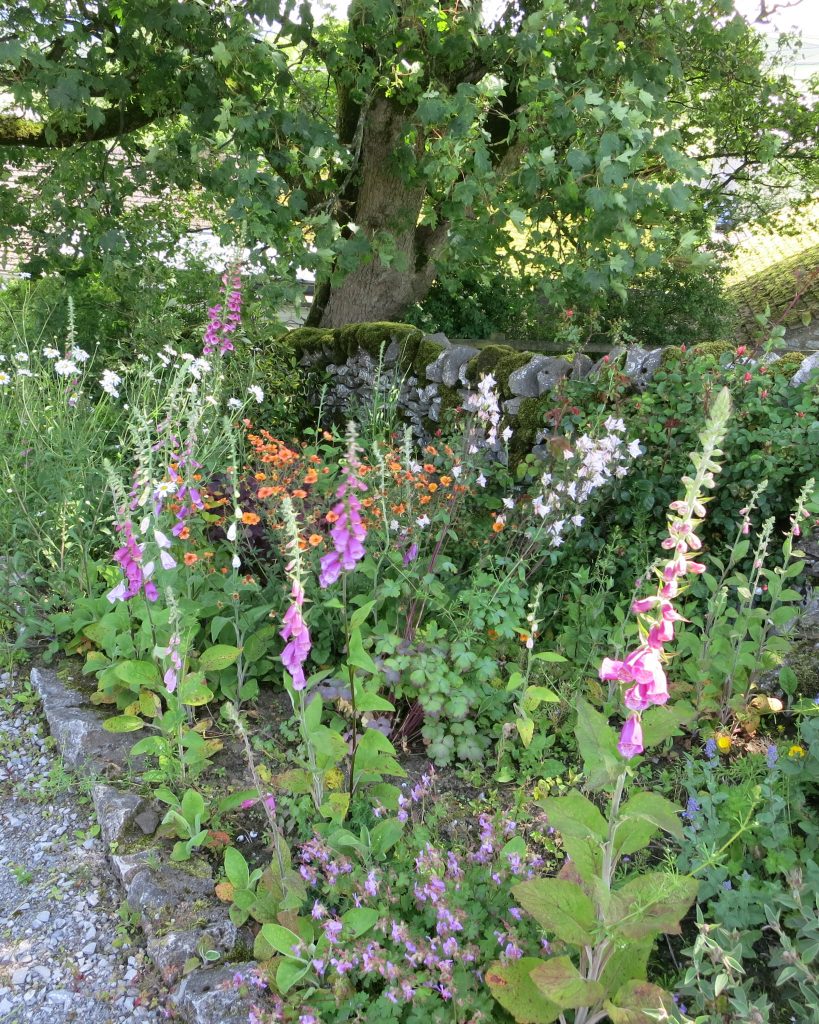
In the hope of inspiring others to create gardens despite less than perfect terrain and climatic conditions, I have put together a history of the evolution of my own garden on a windswept hillside at almost a thousand feet above sea level in Derbyshire’s Peak District.
When I first came to live here I had a full-time demanding job in Manchester and the daily commute left little time for any major gardening projects so, in the early days, any transformation was an extremely slow process.
Bearing in mind that, forty years ago, there was no thought of one day sharing the experience with others, and before the days of digital photography let alone the world wide web, I have no photos to share of the garden as I took it on all that time ago; but I doubt I would have photographed it in any case because it was not a thing of beauty.
I quickly learned that gardening on poor, rocky soil at this blustery, exposed altitude was going to be a very different matter to the gardening I had been used to in my small, south-facing, sheltered garden in south Manchester.
There were very few places where it was possible to stick a spade into the ground without hitting rocks; the business of digging a planting hole in my garden is a far cry from that seen on TV, where the gardeners simply stick a spade into their lovely soft soil. I have to use a mattock, a strong fork and often a crowbar to prise out stubborn rocks; I then need a wheelbarrow to cart the rocks away and a couple of bucketsful of decent soil or compost to backfill the hole I’ve excavated. Despite the many years of gradual soil-improvement, to this day the spade is among my least used garden tools.
The growing season is short on this high and exposed site, and the soil is poor, making for challenging horticultural conditions. I have learned from experience that the accepted practice of planting in threes & fives to give impact is not for me; many are the failed attempts, so it is wise to plant a single specimen to find out whether it will thrive here, before buying more of the same or, better still, propagating further stock. Sadly, many of my favoured plants just do not survive long on my hillside.
It is difficult to convey the timescale over which the garden has evolved. A busy family life and the demands of having to earn a living meant that the garden was rarely a first priority and there were many years where only the barest maintenance was possible.
Seeing the history of the garden laid out here might give the impression of a steady progress of evolution, as if with an underlying master plan, but that is far from reality. Only after many years of earning were we able to afford any serious alterations to the garden and it wasn’t until the children were in their teens that we found ourselves in a position to extend the garden, which seems such a shame as they would have so enjoyed the greater freedom.
We fully appreciate how fortunate we are to be living in the beautiful countryside of the Peak District, but this does come with certain inconveniences, not least of which is the time spent behind the wheel when household supplies are needed, or when frequently providing a teenage taxi service for any extra-curricular or social activities (although I only ever felt this as a constraint when it happened to coincide with a period of all-too-rare perfect gardening weather).
It was only once the children were grown and my husband retired after thirty-five years of teaching, allowing us both to concentrate our efforts on our online business, that we found ourselves occasionally having sufficient disposable income to be able to further extend our land and employ professionals to assist with our landscaping ideas.
Most people in their mid-seventies are thinking of downsizing, but here we are increasing the workload. It is widely accepted that gardeners have to be optimists and that one plants a tree for the next generation. I dare say that my garden will be at its best long after I am gone, but I feel exceptionally lucky to still be able to work away at my hillside and to be able to watch my grandchildren enjoying the garden we have achieved thus far.